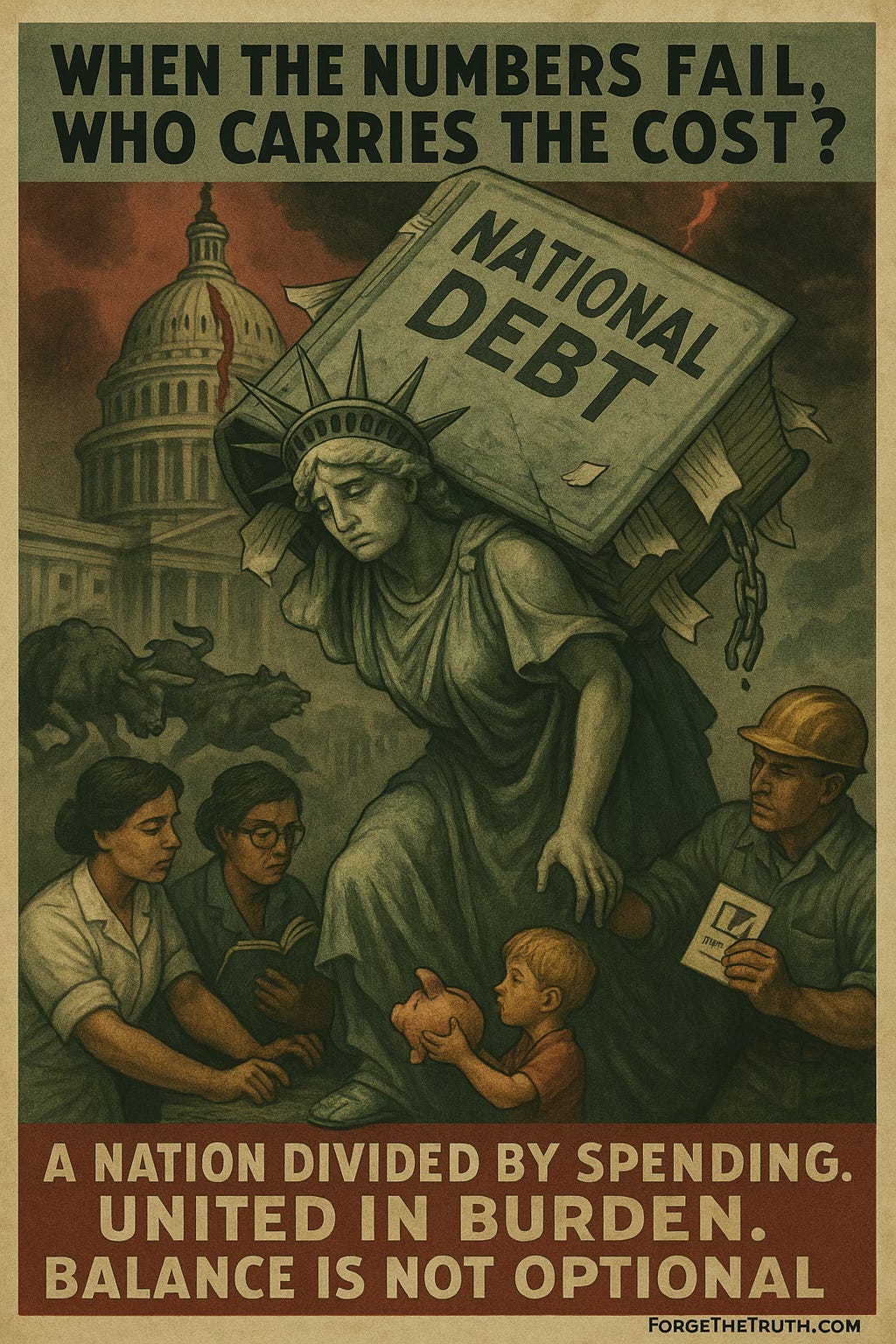In a quiet yet seismic move, Moody’s has downgraded the U.S. government’s credit rating, citing runaway deficits and projections that national debt could reach 134% of GDP by 2035. Markets trembled. Politicians pointed fingers. But behind the headlines, an older truth echoes louder: when governments overspend and underdeliver, it’s the people who pay.
Today’s poster, “When the Numbers Fail, Who Carries the Cost?”, casts Lady Liberty as a weary figure shouldering a ledger too heavy to bear. Around her, ordinary citizens step in to help, nurses, engineers, workers, and even a child offering a piggy bank. This isn’t just symbolic. It’s a reminder that real people, not bureaucrats, absorb the impact of economic recklessness.
When inflation bites, when jobs are cut, when essential services falter, the burden falls not on marble buildings or credit rating agencies, but on kitchen tables and classroom desks.
This is not a left or right issue. It’s a civic crisis. Fiscal responsibility isn’t about austerity for its own sake. It’s about intergenerational trust, ensuring that today’s ambition doesn’t become tomorrow’s collapse. It’s about building a nation that lifts people up, not one that crushes them under invisible debt.
So we ask again, as the poster does:
Who carries the cost?
And will we rise before the weight becomes too great to bear?

